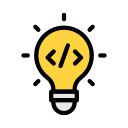Why Cross-Platform Development Tools Matter Now
Today’s cross-platform toolbox is rich: Flutter and its Skia renderer, React Native with TurboModules, .NET MAUI and Xamarin for C#, Kotlin Multiplatform for shared logic, plus Electron and Tauri on desktop. Each brings trade-offs in performance, ecosystem depth, and platform reach that directly influence your product strategy.
Why Cross-Platform Development Tools Matter Now
A shared codebase can trim schedules dramatically, especially for feature parity across iOS, Android, and desktop. While 60–90% reuse is possible on many apps, plan for platform-specific edges, native integrations, and QA. The net result is usually faster iteration cycles and healthier budgets without losing polish.





